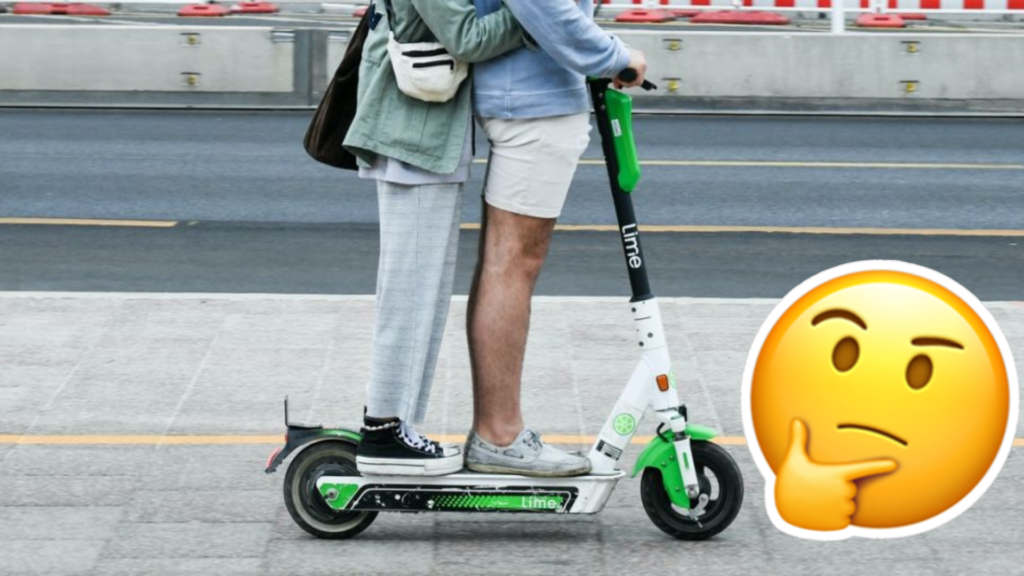Guest Post: The Scooter – Hero Or Villain?

For many years we’ve been hearing that Malta is not suitable for micro-mobility, and going for a stroll in our streets can easily confirm this.
Our pavements are not suited for walking, trees for shade to make walking more pleasant are scarce, a bicycle network is non-existent and bicycle lanes are unusable (excluding a select few).
All of this nudges everyone to reach for their car keys rather than use cleaner, and healthier solutions.
However, another attractive solution surfaced in recent years, the scooter. With the introduction of scooters, we saw how the free market started contributing to solving two of Malta’s most pressing problems, traffic congestion and public health.
International companies have introduced the scooter en masse, trying to unlock the market for micromobility in Malta, and they did so successfully. Take a trip through the Sliema promenade, and you’ll see how significant the uptake is.
Scooters are a great micromobility solution since they are a small and electric mode of transport.
Instead of driving a car, that takes up much more space, makes more noise, and pollutes the air, users who are reaching for scooters are contributing to some of Malta’s most pressing problems. However, as is the case in most cases, we’ve adopted them without foresight and planning, and just hoped for the best.
Needless to say, problems arose. Two people riding on one scooter simultaneously, scooters thrown around everywhere haphazardly across the island, and lack of respect for pedestrians are three of the most common concerns.
We’ve seen a number of photos on social media of scooters blocking pavements, scooters blocking access to garages, and even a photo of an elderly blocked by scooters. A good solution backfired and we are now facing the consequences, but why?
If there are many users who clearly need and want to use them instead of cars, why are we not providing any infrastructure, such as adequate parking facilities or the bicycle network of shared lanes and segregated lanes that we’ve desired for so long.
An absolute majority of scooter parking issues arising in the past years have been from rental scooters. Private scooter users rarely leave their scooters laying around in the street obstructing payments and garages.
Mostly, they carry them into their homes or workplaces. Therefore, the parking discussion should be directed toward scooter rental companies and the respective authorities. We should be democratising our public spaces, why is the priority given to cars and cars alone? One car parking spot can provide space for approximately 15 scooters.
That means 15 fewer cars on our roads, contributing to less traffic, cleaner air, and effectively more parking for everyone including car users. Why are we not looking at the number of scooter users in certain areas and providing parking facilities in proportion to the number of users?
Another important issue is scooter users riding on the pavements, which stems from an issue we’ve been vocal about, safety on the roads.
People feel unsafe on our roads be it with scooters, bicycles or simply walking. We have the right to be able to walk, cycle or use any other micromobility solution safely. Although we’ve seen numerous new road infrastructure projects, the end goal was car prioritisation.
This has created an environment where vulnerable users are unprotected from larger vehicles, leading to many accidents, premature deaths and injuries that could have been avoided.
Additionally, this creates an environment which doesn’t encourage people to use alternative solutions for transport such as walking, cycling, or scooters and we are missing out on this potential.
Infrastructure needs to be inclusive and cater for micromobility solutions such as walking, cycling and scooter use. It is through such approaches only that we can have efficient roads. Some inclusive infrastructure solutions are quite simple, trees along walkways, giving priority to pedestrians, segregated walk/cycle lanes where space allows and shared roads using traffic calming measures.
For Malta to be able to implement the necessary infrastructure and culture shift needed to alleviate the nuisance caused by scooters, we need to start with policies that help government agencies cater to the needs of micromobility. The first piece of policy needed is the National Cycling Policy.
This will enable government entities to consider walking and bicycles by design as part of road infrastructure. This will benefit all micromobility solutions. The highway code should also be updated to include ways to deal with micromobility. The highway code has not been updated in Malta since 1999.
Two aspects we would like to see in our code are a hierarchy of road users and priority for pedestrians and cyclists while crossing side roads. This gives more responsibility to users with larger vehicles i.e. a scooter has more responsibility than a pedestrian, while cars have more responsibility than a bike.
As with many things, there are good users and irresponsible users. Those who abuse the system should be punished, but we should not hinder the progress of people taking the step to be less car-dependent.
Unfortunately, the Minister for Transport, Infrastructure and Capital Projects, Aaron Farrugia, past Minister for Environment, quickly flip-flopped from promoting sustainable usage of transportation such as bikes to prioritising only cars. This change seems to come with the change in his portfolio.
He appears to blame anything for traffic congestion, even feasts, except the direction entities under his remit, are taking with regards to road infrastructure.
The question is this, who’s responsible? Who is to blame? The user? Is the scooter rental company a solution? Or the government entities whose sole responsibility should be to create inclusive and accessible infrastructure for everyone in the country?
Juan Buhagiar is Rota’s Policy Officer
Lovin Malta is open to interesting, compelling guest posts from third parties. These opinion pieces do not necessarily reflect the views of the company. Submit your piece at [email protected]
What do you make of Buhagiar’s perspective?
